(Originally published June 29, 2014)
Odd doings at the Voorhees-Rohr Mansion!
 Our very own Mr. Ian Stuart Dowdy of the Art Students League likes to tell the tale of how he was responsible for the death of an old lady he was supposed to be taking care of. Old Mrs. Voorhees-Rohr was often bedridden with a prolapsed colon and needed round-the-clock care. As no nurse or home-care-giver was available on a live-in basis (this was during the War), and the live-in maid did not wish to do this sort of work, Mrs. V-R had her attorney look for a young man or woman who could move into the spare bedroom down the hall.
Our very own Mr. Ian Stuart Dowdy of the Art Students League likes to tell the tale of how he was responsible for the death of an old lady he was supposed to be taking care of. Old Mrs. Voorhees-Rohr was often bedridden with a prolapsed colon and needed round-the-clock care. As no nurse or home-care-giver was available on a live-in basis (this was during the War), and the live-in maid did not wish to do this sort of work, Mrs. V-R had her attorney look for a young man or woman who could move into the spare bedroom down the hall.
A day or two later our own Ian Stuart Dowdy appeared and you can guess the rest.
A willowy, good-hearted young bit of artsy flotsam, Dowdy was very much an urban “type” of the era. Too snooty to be ribbon clerks at Bonwit Teller, young fellows of this breed very frequently found sinecures as caretakers of enfeebled old ladies and gentlemen or even the odd congenital idiot with a monied family who did not wish to shut him up in an institution.
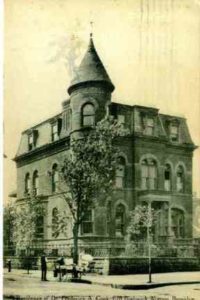 The Voorhees-Rohr mansion on West End Avenue, one of the original houses in the neighborhood, was in a parlous state. Electricity had not been “laid on” until the mid-1920s, and that had been done so quickly and amateurishly, by the son of an Italian cobbler (who has now inherited his father’s shoe-repair shop on Amsterdam Avenue), that the fuses blew whenever you tried to run more than two appliances at once. Our Mr. Dowdy learned this the hard way.
The Voorhees-Rohr mansion on West End Avenue, one of the original houses in the neighborhood, was in a parlous state. Electricity had not been “laid on” until the mid-1920s, and that had been done so quickly and amateurishly, by the son of an Italian cobbler (who has now inherited his father’s shoe-repair shop on Amsterdam Avenue), that the fuses blew whenever you tried to run more than two appliances at once. Our Mr. Dowdy learned this the hard way.
A shocking circumstance
He was bathing old Mrs. Voorhees-Rohr’s feet in the new electric footbath her sister had given her for Christmas 1933 (but which she had never opened), and thought some music might be pleasant. So he started up a Lawrence Tibbett recording on the plug-in Victrola, forgetting first to switch off the big Atwater-Kent radio because its volume had been turned down. Immediately the house was in darkness.
“The gas! The gas!” shouted old Mrs. Voorhees-Rohr. It took a while for Ian Stuart Dowdy to figure out that she meant the gaslight sconces that hung on the walls and still functioned, most of them. Soon the room was bathed in that soft, ethereal glow that only gas can provide; and Mr. Dowdy headed for the stairwell to find the fusebox.
This was nearly a weekly routine at the Voorhees-Rohr residence, and helps to explain why old Mrs. Voorhees-Rohr had never had the gas lighting removed. There was the ever-present danger that gas would leak from an unlit, broken fixture; and indeed, one could detect a bit of gassy smell in some parts of the mansion; but Mrs. Voorhees-Rohr had finessed that problem by leaving a window open in every room of the house. Mr. Dowdy did not understand this, and shut all the windows one cool night in October. Livid and hysterical the way only the old and disabled can be, Mrs. Voorhees-Rohr screamed at the top of her lungs that Dowdy was trying to kill her. People in the neighboring houses heard this and sent the police over to remonstrate with the confused and by now very frightened young caregiver.
Nevertheless, when Mrs. Voorhees-Rohr met her extremely timely end, it was not because of a gas leak. Mr. Dowdy was forbearing and meticulous, and taught himself to disconnect all electrical devices that were not being used. A full month went by without blowing a fuse. Then one day when Mr. Dowdy was briefly out of the room, Mrs. Voorhees-Rohr herself turned on the radio while running both the electric footbath and the plug-in Victrola. Patient as Job, Ian Stuart Dowdy headed on down to the under-stairs to check the fuses. While he did so, Mrs. Voorhees-Rohr helpfully attempted to disconnect the footbath, the radio, and the Victrola. But her grasp of the plugs was uncertain. Just as Dowdy was screwing in a new fuse, she electrocuted herself.
Tragedy and controversy
“She should never have had electricity put in in the first place,” was the opinion of old Mr. Burnington, the sexton from Blessed Sacrament Church on West 71st St. He had an old carriage house on the other side of Amsterdam that would remain the last non-electric holdout in the neighborhood until he passed on in 1959.
Regardless, most people believed that Ian Stuart Dowdy was somewhat to blame for Mrs. Voorhees-Rohr’s death. Neighbors rejoiced when it was reported in the Herald-Tribune that the dowager had left her caregiver absolutely nothing in her will.
It was 1950 before the Voorhees-Rohr heirs were able to evict Mr. Dowdy from the mansion with the help of a $10,000 bribe. By this time they were so sick of the old house that they decided to have it torn down and replaced with one of those ugly brick apartment buildings that were just coming into vogue. Mr. Dowdy meanwhile embellished his tale through many retellings, so that today he himself half-believes that he killed the old lady, and that it was a clear case of justifiable euthanasia.


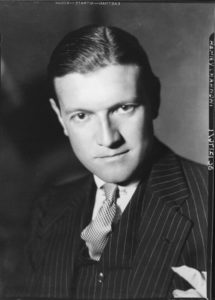

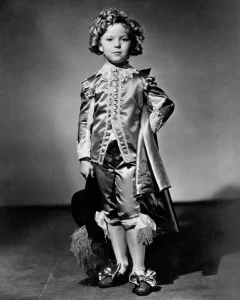

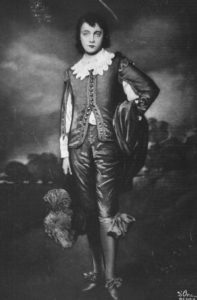








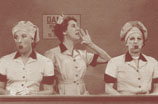 4. Women getting jobs means putting on waitress uniforms (like Mildred Pierce) and working on an assembly line (like Rosie the Riveter). Roz Russell career girls? Never heard of ‘em. If Ethel and Lucy got decent jobs, that would undercut the premise of the humor, which is that women in the workplace are pitiable fish out of water.
4. Women getting jobs means putting on waitress uniforms (like Mildred Pierce) and working on an assembly line (like Rosie the Riveter). Roz Russell career girls? Never heard of ‘em. If Ethel and Lucy got decent jobs, that would undercut the premise of the humor, which is that women in the workplace are pitiable fish out of water.














 “The exhibition title is borrowed from a 1985 American satirical comedy film of the same name directed by Albert Brooks, about a 1980s yuppie couple in Los Angeles who are disgruntled by their bourgeois lifestyle. Koons wants viewers to draw their own interpretations of that title, as well as the intention or meaning of the works.”
“The exhibition title is borrowed from a 1985 American satirical comedy film of the same name directed by Albert Brooks, about a 1980s yuppie couple in Los Angeles who are disgruntled by their bourgeois lifestyle. Koons wants viewers to draw their own interpretations of that title, as well as the intention or meaning of the works.”
 Our very own Mr. Ian Stuart Dowdy of the Art Students League likes to tell the tale of how he was responsible for the death of an old lady he was supposed to be taking care of. Old Mrs. Voorhees-Rohr was often bedridden with a prolapsed colon and needed round-the-clock care. As no nurse or home-care-giver was available on a live-in basis (this was during the War), and the live-in maid did not wish to do this sort of work, Mrs. V-R had her attorney look for a young man or woman who could move into the spare bedroom down the hall.
Our very own Mr. Ian Stuart Dowdy of the Art Students League likes to tell the tale of how he was responsible for the death of an old lady he was supposed to be taking care of. Old Mrs. Voorhees-Rohr was often bedridden with a prolapsed colon and needed round-the-clock care. As no nurse or home-care-giver was available on a live-in basis (this was during the War), and the live-in maid did not wish to do this sort of work, Mrs. V-R had her attorney look for a young man or woman who could move into the spare bedroom down the hall. The Voorhees-Rohr mansion on West End Avenue, one of the original houses in the neighborhood, was in a parlous state. Electricity had not been “laid on” until the mid-1920s, and that had been done so quickly and amateurishly, by the son of an Italian cobbler (who has now inherited his father’s shoe-repair shop on Amsterdam Avenue), that the fuses blew whenever you tried to run more than two appliances at once. Our Mr. Dowdy learned this the hard way.
The Voorhees-Rohr mansion on West End Avenue, one of the original houses in the neighborhood, was in a parlous state. Electricity had not been “laid on” until the mid-1920s, and that had been done so quickly and amateurishly, by the son of an Italian cobbler (who has now inherited his father’s shoe-repair shop on Amsterdam Avenue), that the fuses blew whenever you tried to run more than two appliances at once. Our Mr. Dowdy learned this the hard way.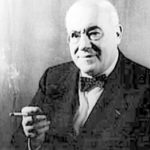

 A. You really should not read those “online doctor websites” as they are compost heaps of misinformation. They are the number-one cause of hypochondria and medical conspiracy theories. This anti-vaccination kookery, for example. I don’t know where that started, but as the old saying goes, a conspiracy theory can go around the world before an honest physician has time to put his galoshes on.
A. You really should not read those “online doctor websites” as they are compost heaps of misinformation. They are the number-one cause of hypochondria and medical conspiracy theories. This anti-vaccination kookery, for example. I don’t know where that started, but as the old saying goes, a conspiracy theory can go around the world before an honest physician has time to put his galoshes on.





